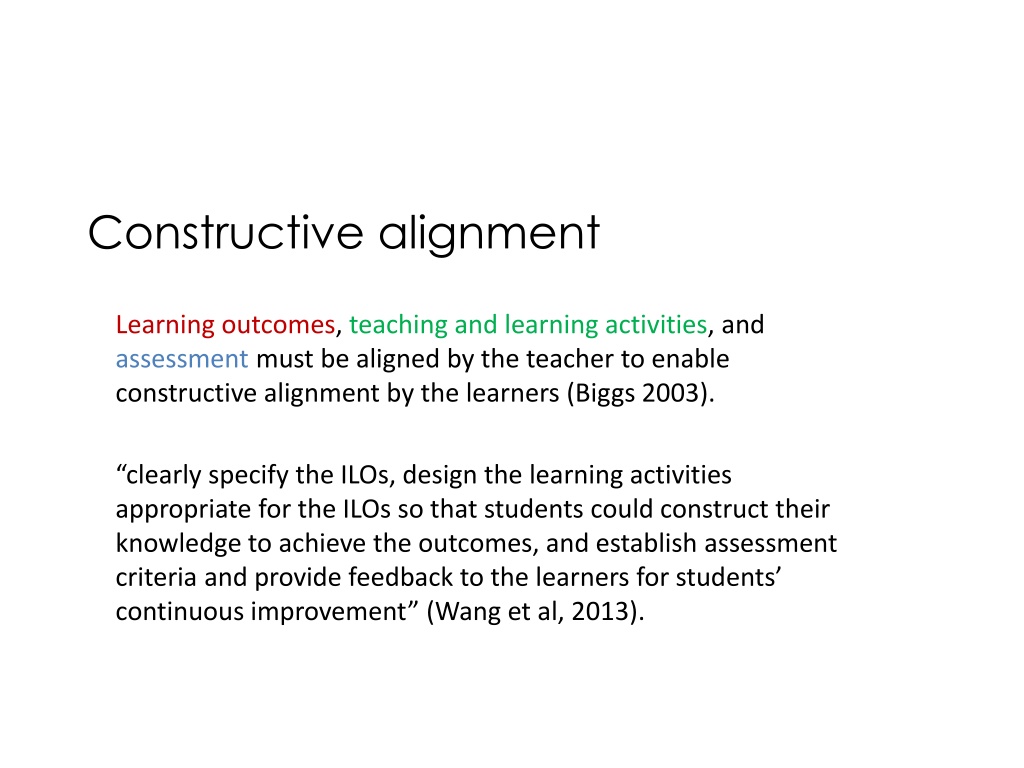Constructive Alignment in Teaching and Learning: A Comprehensive Guide
Constructive alignment emphasizes the importance of aligning learning outcomes, teaching activities, and assessments to enhance student learning. By clearly specifying learning outcomes, designing appropriate activities, and establishing assessment criteria with feedback, educators can foster constructive alignment in educational settings. This approach ensures that students can construct their knowledge effectively to achieve desired outcomes. The provided content highlights the key aspects of constructive alignment and offers insights into designing courses that promote meaningful learning experiences for students.
Uploaded on Sep 07, 2024 | 0 Views
Download Presentation

Please find below an Image/Link to download the presentation.
The content on the website is provided AS IS for your information and personal use only. It may not be sold, licensed, or shared on other websites without obtaining consent from the author. Download presentation by click this link. If you encounter any issues during the download, it is possible that the publisher has removed the file from their server.
E N D
Presentation Transcript
Constructive alignment Learning outcomes, teaching and learning activities, and assessment must be aligned by the teacher to enable constructive alignment by the learners (Biggs 2003). clearly specify the ILOs, design the learning activities appropriate for the ILOs so that students could construct their knowledge to achieve the outcomes, and establish assessment criteria and provide feedback to the learners for students continuous improvement (Wang et al, 2013).
Checking Constructive Alignment Activity 1 ILO 1 Assessment 1 Activity 2 ILO 2 Assessment 2 Activity 3 ILO 3 Activity 4
Activity 1 ILO 1 Assessment 1 Activity 2 ILO 2 Assessment 2 Activity 3 ILO 3 Activity 4
Activity 1 ILO 1 Assessment 1 Activity 2 ILO 2 Assessment 2 Activity 3 ILO 3 Activity 4
Activity 1 ILO 1 Assessment 1 Activity 2 ILO 2 Assessment 2 Activity 3 ILO 3 Activity 4
Steps 1.6, 1.7, 1.8 Become more aware of what is possible with digital technologies and online learning and teaching Quiz 1.3 Discussions Steps 1.2, 1.3, 1.4, 1.5, 1.6, 1.7, 1.8, 1.9 Steps 1.2, 1.3, 1.4 1.5, 1.7 Plan the rethinking of your teaching Steps 1.6, 1.8, 1.9 Experience of some of the basic digital tools you will need Poll
























